Introduction
Art has always been a dynamic expression of human creativity, constantly evolving to break the boundaries of tradition and challenge our perceptions. Kinetic sculpture, a mesmerizing form of art, encapsulates the essence of movement and innovation. In this extensive exploration, we will delve into the fascinating world of kinetic sculpture, uncovering its origins, diverse forms, unique advantages, and the artists who have made significant contributions to this dynamic art form.
What Is Kinetic Sculpture?
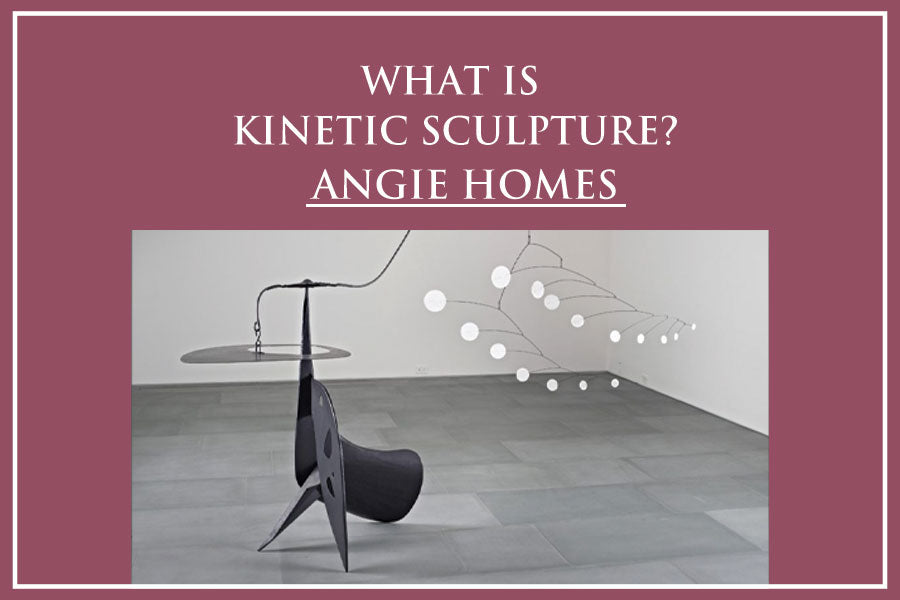
Kinetic sculpture refers to artworks that incorporate movement as a key element of their design. Unlike traditional static sculptures, kinetic sculpture comes to life through motion, engaging viewers in an immersive and interactive experience. These sculptures harness various mechanisms, technologies, and materials to create a dynamic visual narrative. The term "kinetic" is derived from the Greek word "kinesis," meaning motion, and kinetic sculpture often blur the lines between art and engineering.
-
Defining Kinetic Sculpture
At its core, kinetic sculpture embodies the marriage of aesthetics and mechanics. These artworks can range from small, delicate pieces set in motion by a gentle breeze to large-scale installations powered by sophisticated mechanical systems. The essence lies in the perpetual dance of movement, captivating audiences and challenging the static nature traditionally associated with sculpture.
-
The Intricacies of Motion
Kinetic sculptures are not merely static objects brought to life; they are intricate orchestrations of motion, often requiring careful planning and engineering. The movement can be powered by wind, water, electricity, or even human interaction. This dynamic quality elevates kinetic sculpture beyond the realm of traditional art, inviting viewers to contemplate the interplay between form and movement.
As we continue our exploration, the next section will unveil the historical roots of kinetic sculpture, tracing its evolution through the annals of art history.
A Brief History of Kinetic Sculpture
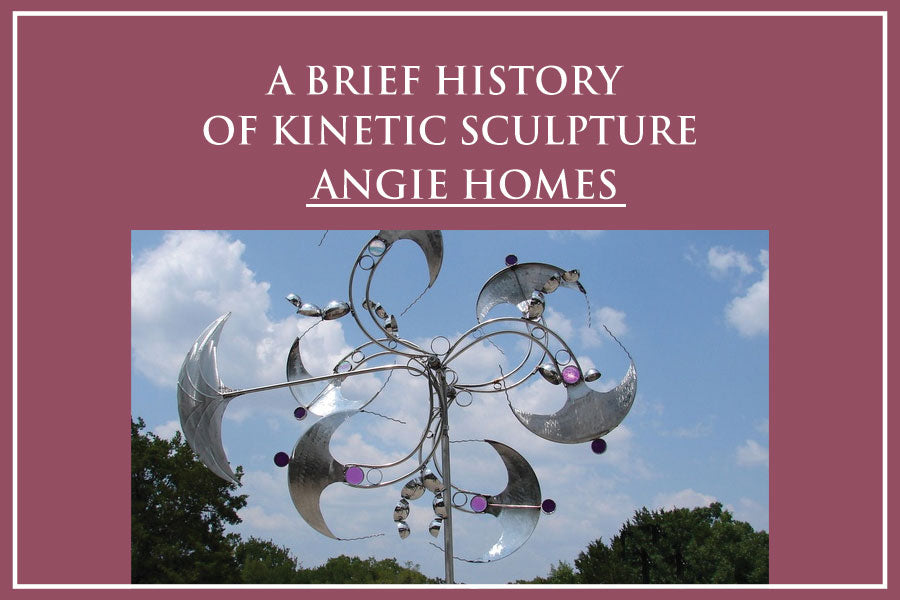
The history of kinetic sculpture is a captivating journey through time, marked by the ingenuity of artists who sought to transcend the static nature of traditional sculpture. From early experiments to contemporary masterpieces, each era has contributed to the evolution of kinetic art.
-
Precursors to Kinetic Sculpture
The roots of kinetic sculpture can be traced back to ancient times when simple devices and automata were crafted as entertainment or religious artifacts. These early examples, such as the ancient Chinese flying automata and the Hellenistic water clock, laid the groundwork for the integration of movement in artistic expression.
-
The Kinetic Renaissance
The true renaissance of kinetic sculpture emerged during the 20th century, fueled by technological advancements and a desire to break free from traditional artistic constraints. Artists like Naum Gabo and Alexander Calder pioneered the incorporation of movement into sculpture, exploring the dynamic potential of abstract forms.
-
Mid-Century Innovations
The mid-20th century witnessed a surge in kinetic art, with artists like Jean Tinguely and George Rickey pushing the boundaries of traditional sculpture. Tinguely's iconic "Homage to New York" (1960), a self-destructive kinetic machine, epitomized the rebellious spirit of the era.
-
Contemporary Expressions
In the 21st century, technological advancements have opened new frontiers for kinetic sculpture. Artists seamlessly blend digital technology, robotics, and interactive elements into their creations, expanding the possibilities of movement and engagement. This historical overview sets the stage for a deeper understanding of the diverse types of kinetic sculpture that have emerged over the years.
Types of Kinetic Sculpture
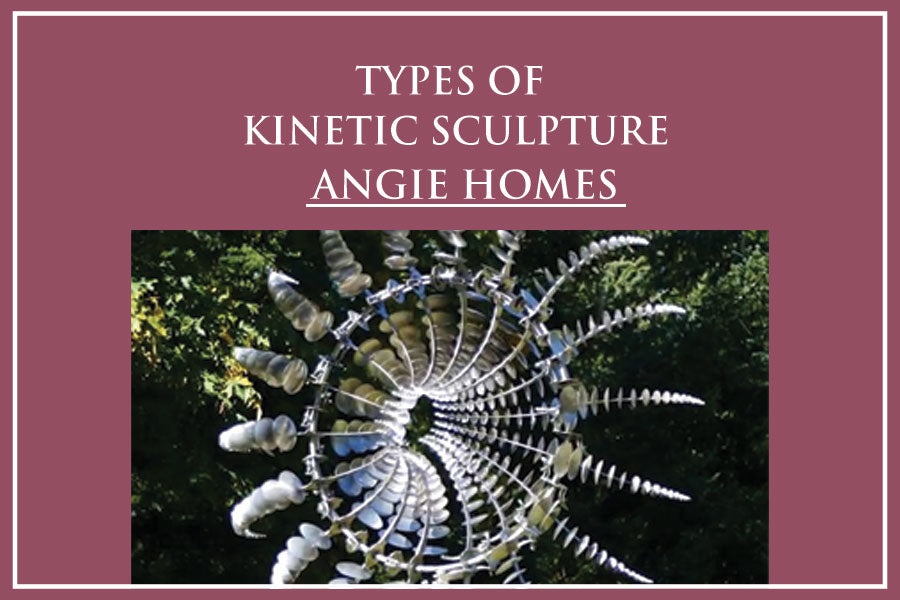
As kinetic sculpture evolved, artists explored various forms, mechanisms, and materials to bring movement to life. The diversity of kinetic sculpture is a testament to the boundless creativity within this artistic realm.
1. Wind-Powered Kinetic Sculptures
One of the earliest and most enchanting forms of kinetic sculpture relies on the power of the wind. Wind-driven sculptures, such as those crafted by Dutch artist Theo Jansen, feature intricate mechanisms that harness the natural forces of the breeze. Jansen's "Strandbeests" are awe-inspiring, skeletal creatures that elegantly traverse beaches, embodying a harmonious dance with the elements.
2. Motorized Kinetic Sculptures
Motorized kinetic sculpture leverages electric motors or engines to generate movement. These artworks often feature rotating components, pivoting elements, or intricate gears that produce mesmerizing motion. Artists like Rebecca Horn and Arthur Ganson have created captivating motorized sculptures, blurring the lines between machinery and artistry.
3. Water-Driven Kinetic Sculptures
Water, with its fluidity and constant motion, serves as a captivating medium for kinetic sculpture. Artists have ingeniously utilized water to power intricate mechanisms, resulting in sculptures that ripple and flow. The "Archimedean Excogitation" by artist George Greenamyer is a notable example, employing water power to create a dynamic and ever-changing visual experience.
4. Interactive Kinetic Installations
In the digital age, interactive kinetic sculpture has gained prominence. These installations often incorporate sensors, responsive elements, and programmable technology to engage viewers in a participatory experience. Artists like Rafael Lozano-Hemmer and Anthony Howe create interactive kinetic sculpture that respond to the presence and movements of the audience, blurring the lines between creator and spectator.
Advantage of Kinetic Sculpture

Kinetic sculpture offers a myriad of advantages that set it apart from traditional static artworks. The incorporation of movement introduces a new dimension, captivating audiences and challenging the conventional boundaries of artistic expression.
-
Dynamic Engagement
The most evident advantage of kinetic sculpture lies in its ability to captivate and engage viewers through motion. Unlike static sculptures that rely on a fixed form, kinetic sculptures invite the audience to witness an ever-changing display of movement, fostering a dynamic and interactive experience.
-
Evolving Perspectives
Kinetic sculptures challenge the traditional notion of a single, fixed perspective. As these artworks move and transform, viewers are encouraged to explore the kinetic sculpture from different angles and vantage points. This evolving perspective adds a layer of complexity to the artistic encounter, inviting individuals to actively participate in the viewing experience.
-
Fusion of Art and Technology
Kinetic sculpture often bridges the gap between art and technology, incorporating mechanical, electronic, or digital components. This fusion not only expands the creative possibilities for artists but also reflects the evolving relationship between art and the advancements of the modern age.
-
Environmental Interaction
Some kinetic sculpture types interact with their environment, responding to natural elements such as wind, water, or light. This interaction with the surroundings creates a dynamic and symbiotic relationship between the artwork and the space it occupies, reinforcing the interconnectedness of art and nature.
Common Characteristics of Kinetic Sculptures
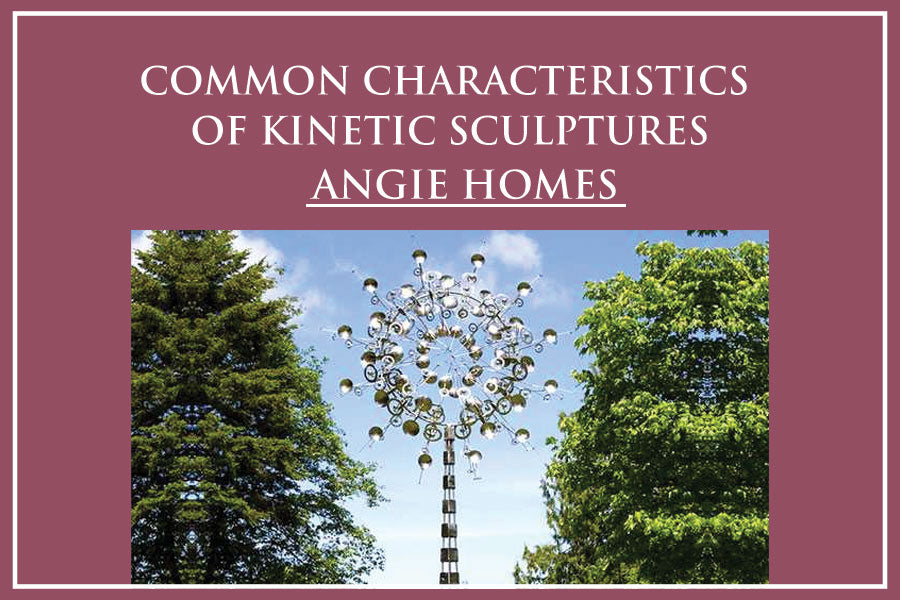
While kinetic sculpture encompasses a wide range of forms and techniques, certain common characteristics define this dynamic art form. These shared elements contribute to the captivating nature of kinetic sculpture, creating a cohesive thread that connects diverse works across time and styles.
-
Movement as Core Element
The defining characteristic of kinetic sculpture is, unsurprisingly, movement. Whether powered by wind, motors, water, or interactive technologies, the incorporation of motion distinguishes kinetic sculptures from their static counterparts. This dynamic quality is not merely an embellishment but an integral aspect that breathes life into the artwork.
-
Rhythm and Choreography
Kinetic sculptures often exhibit a sense of rhythm and choreography in their movements. The carefully orchestrated motion creates a harmonious dance, transforming the sculpture into a kinetic performance. Artists pay meticulous attention to the pacing and coordination of movements, enhancing the overall aesthetic and emotional impact.
-
Interaction with Environment
Many kinetic sculpture types interact with their environment, responding to external factors such as wind direction, light conditions, or even the presence of viewers. This environmental interaction blurs the boundaries between the artwork and its surroundings, creating a symbiotic relationship that adds an extra layer of complexity to the overall experience.
-
Mechanical Ingenuity
The construction of kinetic sculpture often involves a high degree of mechanical ingenuity. Artists must master the principles of mechanics and engineering to bring their visions to life. The complexity of gears, levers, and other mechanical components adds an additional layer of intrigue, inviting viewers to appreciate the technical skill required to create these dynamic works of art.
Notable Kinetic Sculpture Artists
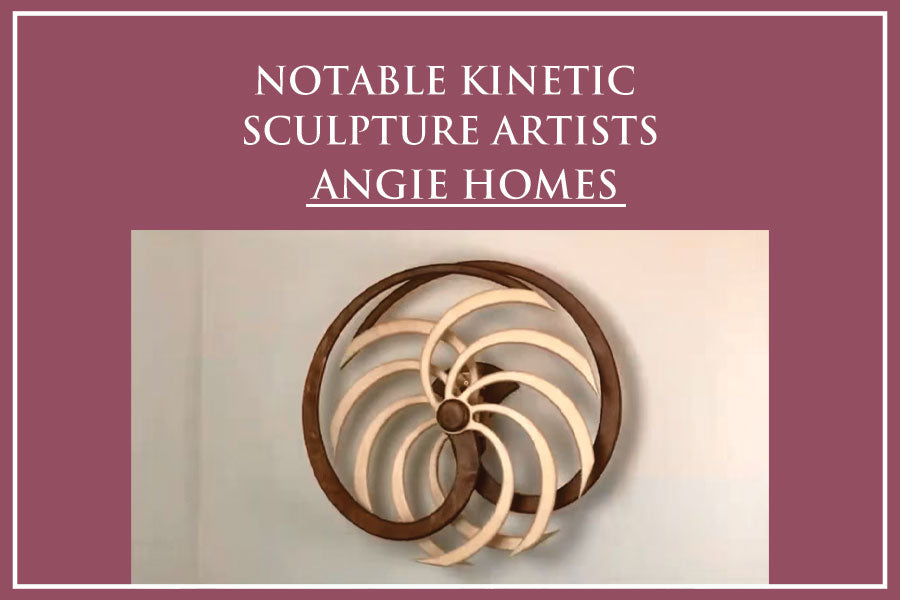
The world of kinetic sculpture has been enriched by the creativity and innovation of numerous artists. Four individuals stand out for their pioneering contributions, pushing the boundaries of kinetic art and leaving an indelible mark on the artistic landscape.
-
Alexander Calder (1898–1976)
Alexander Calder, often regarded as the father of kinetic sculpture, was an American sculptor known for his mobiles—suspended, abstract sculptures that move with air currents. His groundbreaking work in the mid-20th century laid the foundation for the kinetic art movement. Calder's mobiles, characterized by delicate balance and intricate movements, continue to inspire contemporary kinetic artists.
-
Naum Gabo (1890–1977)
A Russian constructivist sculptor, Naum Gabo played a crucial role in introducing kinetic elements to modern sculpture. Gabo's pioneering work focused on the use of transparent materials and innovative engineering to create dynamic forms. His "Kinetic Construction" series, initiated in the 1920s, showcased his commitment to exploring the possibilities of movement in sculpture.
-
Jean Tinguely (1925–1991)
Swiss artist Jean Tinguely was a key figure in the kinetic art movement during the mid-20th century. Tinguely's kinetic sculpture, often composed of discarded machine parts, embraced a sense of chaos and whimsy. His iconic "Homage to New York" (1960), a self-destructive machine, epitomizes Tinguely's rebellious and avant-garde approach to kinetic art.
-
Theo Jansen (b. 1948)
Dutch artist Theo Jansen is renowned for his awe-inspiring "Strandbeests" (beach animals), wind-powered kinetic sculpture that roam beaches with a lifelike quality. Jansen's imaginative use of PVC tubing and intricate linkages allows these skeletal creatures to harness wind energy, showcasing a harmonious blend of art, engineering, and nature.
Ready to Tap Into Your Artistic Abilities?
The exploration of kinetic sculpture opens doors to a realm where creativity converges with mechanics, and art becomes a dynamic, living entity. If you find yourself inspired by the mesmerizing movements and innovative designs of kinetic sculptures, perhaps it's time to tap into your own artistic abilities.
-
Embracing Experimentation
One of the key aspects of kinetic sculpture is a willingness to experiment. Whether you're drawn to wind-powered creations, motorized sculptures, or interactive installations, the world of kinetic art encourages artists to push boundaries and explore uncharted territories. Embrace experimentation as a fundamental aspect of your artistic journey.
-
Learning the Basics of Mechanics
As with any form of kinetic art, understanding the basics of mechanics is essential. Familiarize yourself with concepts such as leverage, gears, and pivot points. Learning these fundamental principles will empower you to bring your kinetic sculpture ideas to life, allowing you to create captivating movements with precision.
-
Incorporating Technology
The modern landscape of kinetic sculpture often involves the integration of technology. Consider incorporating sensors, motors, or programmable elements into your creations. This fusion of traditional craftsmanship with contemporary technology can open up new avenues for artistic expression.
Conclusion
The world of kinetic sculpture is a mesmerizing tapestry woven from the threads of movement, innovation, and artistic expression. From its early origins in ancient automata to the contemporary masterpieces of today, kinetic sculpture has evolved into a dynamic and influential art form that transcends traditional boundaries.
Whether you are an aspiring artist ready to embark on your kinetic sculpture odyssey or an enthusiast appreciating the works of masterful creators, the world of kinetic art beckons with open arms. It challenges us to reconsider the static nature of art, inviting us into a realm where sculptures breathe, twist, and turn, captivating our senses and inspiring our imaginations.
As kinetic sculpture continues to evolve in the hands of contemporary artists, it leaves an indelible mark on the landscape of art history. So, are you ready to delve into the captivating world of kinetic sculpture, where art is not just observed but experienced in motion? The journey awaits, and the possibilities are as limitless as the ever-changing dance of a kinetic sculpture.
Also Read: Exploring the World of Sculpture: A Comprehensive Guide
FAQ's
Q. Who made kinetic sculpture?
Ans: Kinetic sculpture was pioneered by various artists, but Alexander Calder is often regarded as a key figure and one of the early contributors to the genre. His innovative mobiles, suspended sculptures that move with air currents, played a significant role in shaping the field of kinetic sculpture.
Q. What is kinetic and mobile sculpture?
Ans: Kinetic sculpture incorporates movement as a fundamental aspect of its design, engaging viewers in an interactive experience. Mobile sculpture is a specific type of kinetic sculpture that typically features suspended, balanced elements that move freely, responding to air currents or touch. Both emphasize the dynamic quality of motion in art.
Q. What are the two types of kinetic sculpture?
Ans: Kinetic sculpture can be broadly categorized into two types: motorized kinetic sculpture, which use electric motors or engines to generate movement, and wind-driven kinetic sculptures, which harness the natural force of the wind to create motion. These types showcase the diverse ways artists bring movement to their creations.
Q. Who is the father of kinetic art?
Ans: Alexander Calder is often referred to as the "father of kinetic art." His innovative mobiles, initiated in the early to mid-20th century, played a pivotal role in establishing the foundations of kinetic art. Calder's ability to combine movement, balance, and artistic expression influenced subsequent generations of artists within the kinetic art movement.
Q. What was the first kinetic sculpture?
Ans: Pinning down the first kinetic sculpture is challenging due to the ancient history of automata and mechanical devices. However, early examples include ancient Chinese flying automata and Hellenistic water clocks. In the modern era, Alexander Calder's mobiles and Naum Gabo's "Kinetic Construction" series were influential early contributions to kinetic sculpture.
Q. What materials are used in kinetic sculpture?
Ans: Kinetic sculptures can incorporate a wide range of materials, depending on the artist's vision and the desired aesthetic. Common materials include metals like steel and aluminum for structural components, transparent materials such as acrylics for visual effects, and lightweight materials like PVC for wind-driven sculptures. Artists may also integrate technology, using motors, sensors, and programmable elements to enhance the kinetic aspects of their creations. The choice of materials often contributes to the overall visual and tactile experience of the artwork.

